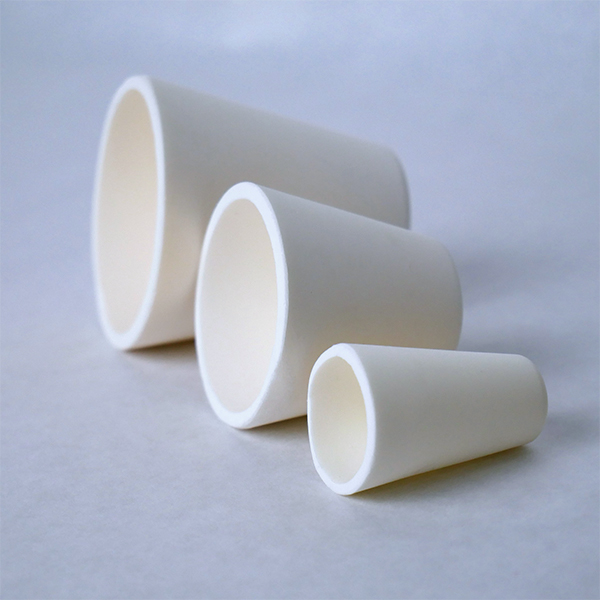
Products

Aluminum Oxide Ceramics for Crucible
Features
TATEHO OZARK specializes in magnesia ceramics, but many of our customers also use alumina ceramics for various applications. TATEHO OZARK manufactures 99.5% alumina crucibles and trays in the same sizes and price range as our magnesia products.
Chemical Composition(Typical)
| CONTENT | Typical |
|---|---|
| Al2O3 | 99.60% |
| CaO | 0.04% |
| SiO2 | 0.02% |
| MgO | 0.06% |
| Fe2O3 | 0.04% |
| Na2O | 0.08% |
Physical Properties(Typical)
| CONTENT | Typical |
|---|---|
| Density | > 3.7 gm/cc minimum, typically 3.85 gm/cc |
| Porosity | Typically 4%, less than 1% open porosity |
Fired alumina parts have reasonably good mechanical strength and reasonably good thermal shock resistance. However, the thin walls limit the mechanical strength and charge weight the crucibles can tolerate. Please consult us with any questions concerning physical properties.
Size and Surface
| CONTENT | Typical |
|---|---|
| Dimensions | The normal fabrication range is for diameters less than 5 inches and lengths less than 8 inches. Larger parts can be made upon request, at some sacrifice in cost and dimensional control. Please inquire for further information. |
| Wall thickness | The nominal wall thickness for most shapes is 0.125” (or 3mm), and the maximum thickness available is about 0.2 inch (4mm) and the minimum is about 0.08 inch (2mm). |
| Surface | Surface finish may vary, but is usually smooth. Surface is not usually “vitrified”. |
| Tolerances | Unless tighter tolerances are specified, dimensional tolerances for diameters, heights, and lateral dimensions are 0.125 inch or 5%, whichever is less. These tolerances apply to nominal dimensions only, and do not apply to out of round conditions or distortions. Please consult us if dimensional constraints are important so that the tolerances and inspection methods may be clarified. Other visual inspection criteria will be supplied on request. |
Shape
Parts are made by slip casting. Slip casting is suitable for production of hollow shapes with uniform wall thickness and an opening to the interior. This is ideal for shapes such as crucibles, trays, boats, etc. There should be no re-entrant angles along the longitudinal cross section of the part (such as Ell-shapes, Crosses, etc.).
Slip casting will produce a variety of shapes as indicated above. Surface finish does not approximate that of machined surfaces. Nominally flat surfaces, such as lids, crucible and tray bottoms, and plates will be concave or convex after firing. If precision dimensions or flat surfaces are required, additional wet diamond machining is required, and many limitations apply. Custom shapes will require set-up charges and sufficient lead time for mold master and mold production.

PRODUCT LIST
- Magnesium Oxide Ceramics for Crucible
- Aluminum Oxide Ceramics for Crucible
- Magnesium Oxide Ceramics for Insulator
- High Density Magnesium Oxide Ceramics (GRADE HRM)
- Aluminum Oxide Ceramics for Insulator
- Hafnium Oxide Ceramics for Insulator
- Silicon Dioxide Ceramics for Insulator
- Magnesium Aluminate Ceramics for Insulator
- Magnesium Oxide Powder
- Aluminum Oxide Powder
- Hafnium Oxide Powder
- Magnesium Oxide Ceramics for Setter
